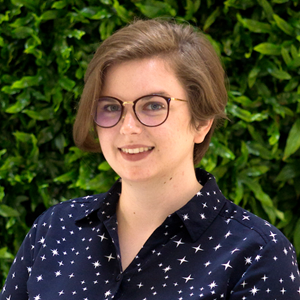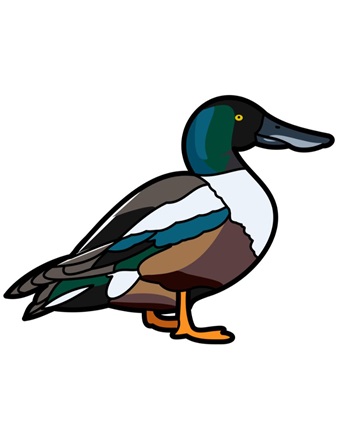
Emily Griffith describes her lifelong love of birds as a childhood phase she never outgrew. Griffith is not alone — birdwatching as a hobby has recently grown in popularity — but as an ornithologist, she is excited to see people both in and outside of the science community learn to appreciate the creatures. "Birds are so intrinsically motivating to study — they’re so charismatic," she explained. "People can relate to them on many levels."
As she enters her third year in Drexel's Ecology, Evolution and Earth Systems PhD program, Griffith has been awarded over $10,000 in grant funding this year alone to further her ornithological research. Most recently, Griffith was one of two recipients of the Louis Agassiz Fuertes Grant, the most prestigious research grant awarded by the Wilson Ornithological Society. She has also received support from the American Ornithological Society and the American Museum of Natural History — perfect timing, as she just passed her PhD candidacy and will now focus full-time on her research. "Right now, we're starting to get samples in, and I can start working with the data," she explained. "Up until now it's been a lot of planning, but the support of these grants is going to be really helpful in moving my research forward."
Working in the Academy of Natural Sciences' ornithology department, Griffith's research focuses on the differences in plumage between male and female ducks. "I love to talk about ducks, because everyone knows what a duck is," Griffith said. "Some bird species are kind of obscure, but these are birds you can easily find at a local park or barnyard."
If you think about the ducks you've seen, the mallard probably comes to mind — it's the most common duck in North America. Like most bird species, the male mallard with its recognizable bright green head is more colorful than the female. But in a similar species, the American black duck, the male and the female look nearly identical.
"Typically, we think about female birds liking bright and colorful plumage. Through evolutionary time, plumage gets brighter and more colorful," Griffith explained. "But in ducks, it's actually the opposite. Bright male plumage evolves to become more female-like, or dull. Female birds are typically duller because they sit on the nest, and it serves as better camouflage."
Griffth's research explores two questions: Genetically, what causes a loss of bright plumage in male ducks? And what are the evolutionary drivers for this loss of bright plumage in ducks, when for so many other species we see the opposite?

Griffith's illustration of a male Northern Shoveler.
To conduct her research, Griffith will analyze the ducks' genetic sequences from DNA extracted from tissue samples. One of the benefits of working at the Academy of Natural Sciences is its vast ornithology collection, which houses over 200,000 specimens. A few duck species are underrepresented in the collection, but because ducks are game birds, Griffith can also work with hunting organizations to obtain samples. "We just need a very small amount of tissue for our sequencing,” she explained. "My goal is to take advantage of what is already out there so we can build our collections and form partnerships with these organizations."
This type of partnership and collaboration reflects how Griffith views science as something that should be accessible to all, not just scientists. She chose to pursue her PhD at Drexel because of its link to the Academy of Natural Sciences and the opportunity to work with its robust scientific collection and interact with the public. "There aren't a ton of programs that allow you to work in large, public-facing collections at the university level," she explained. "Science communication is a big goal of mine, and I think the public-facing component of the Academy of Natural Sciences is really important."
That's why you can often find Griffith stepping outside of the Academy's ornithology labs to lead children's tours of the museum and birding trips for undergraduate students. Also a skilled artist, she has found a way to use illustration and graphic design to further her passion for communicating science in a way that everyone can understand.
"I believe that as scientists, our role isn't just to do science, but to communicate it," she said. "Being able to do so visually really expands audiences. I just won a presentation award at a conference for my talk, and a lot of people said they appreciated the clear visuals and graphics, because sometimes you have so much information thrown at you that a picture really is worth a thousand words. Being able to literally illustrate scientific concepts helps me talk about my research."
Griffith dreams of being a curator in a natural history museum someday, but she's keeping her options open as she continues to develop her research. Since ducks are used for food and recreational purposes, there could be avenues for a duck expert in places like the USDA, the Bureau of Land Management or the National Park Service. "The benefit of studying ducks is that there are so many places that you can go with it," she said. "I just want a role that allows me to continue to teach and talk with the public and promote the conservation of birds."